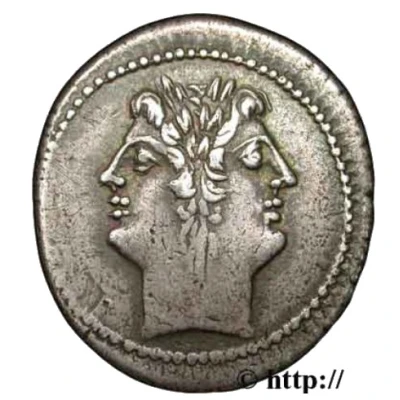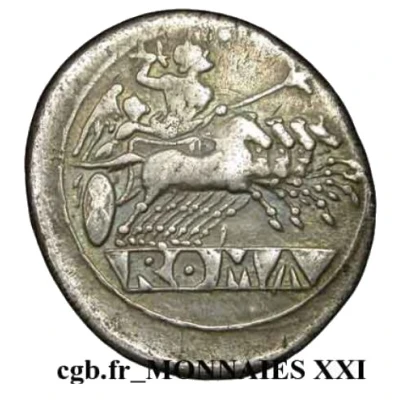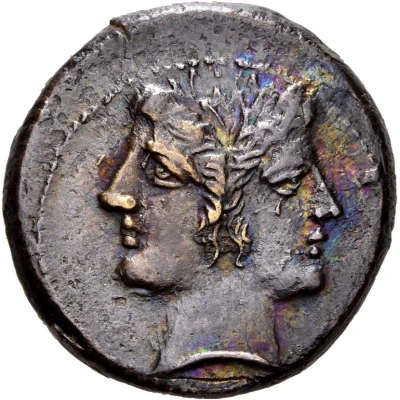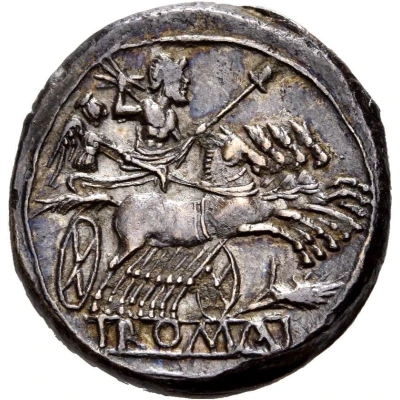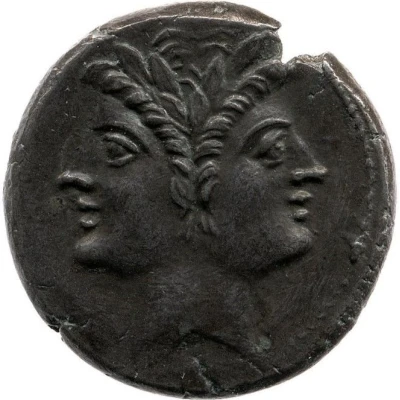
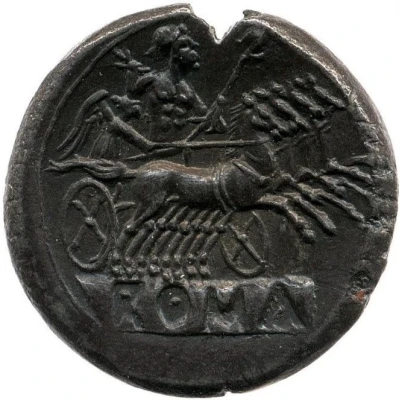

© British Museum
Didrachm Anonymous; ROMA 225 BC - 214 BC
| Silver | 6.50 g | 21 mm |
| Issuer | Rome › Roman Republic (509 BC - 27 BC) |
|---|---|
| Period | Republic (509 BC - 27 BC) |
| Type | Standard circulation coin |
| Years | 225 BC - 214 BC |
| Value | Didrachm (2) |
| Currency | Drachm (?-235 BC) |
| Composition | Silver |
| Weight | 6.50 g |
| Diameter | 21 mm |
| Thickness | 8 mm |
| Shape | Round (irregular) |
| Technique | Hammered |
| Orientation | Variable alignment ↺ |
| Demonetized | Yes |
| Updated | 2024-10-06 |
| Numista | N#383764 |
|---|---|
| Rarity index | 100% |
Reverse
Jupiter in quadriga, right, driven by Victory. Jupiter holds sceptre in left hand and hurls thunderbolt with right hand; incuse on tablet, inscription
Script: Latin
Lettering: ROMA
Translation: Rome
Comment
Weight varies from 5.45g-6.76gInteresting fact
The Didrachm coin was used as a standard unit of currency in ancient Rome and was equivalent to two Roman denarii. It was first introduced during the Roman Republic and was used until the reign of Julius Caesar. The coin was made of silver and weighed 6.5 grams, as . Interestingly, the Didrachm coin was also used as a means of propaganda by the Roman government. The coins often featured images of Roman gods and goddesses, as well as symbols of Roman power and authority. This was done to promote the idea of Roman supremacy and to reinforce the idea that the Roman state was divinely sanctioned. Overall, the Didrachm coin played an important role in the economy and political culture of ancient Rome, and its design and symbolism continue to be studied by historians and numismatists today.
